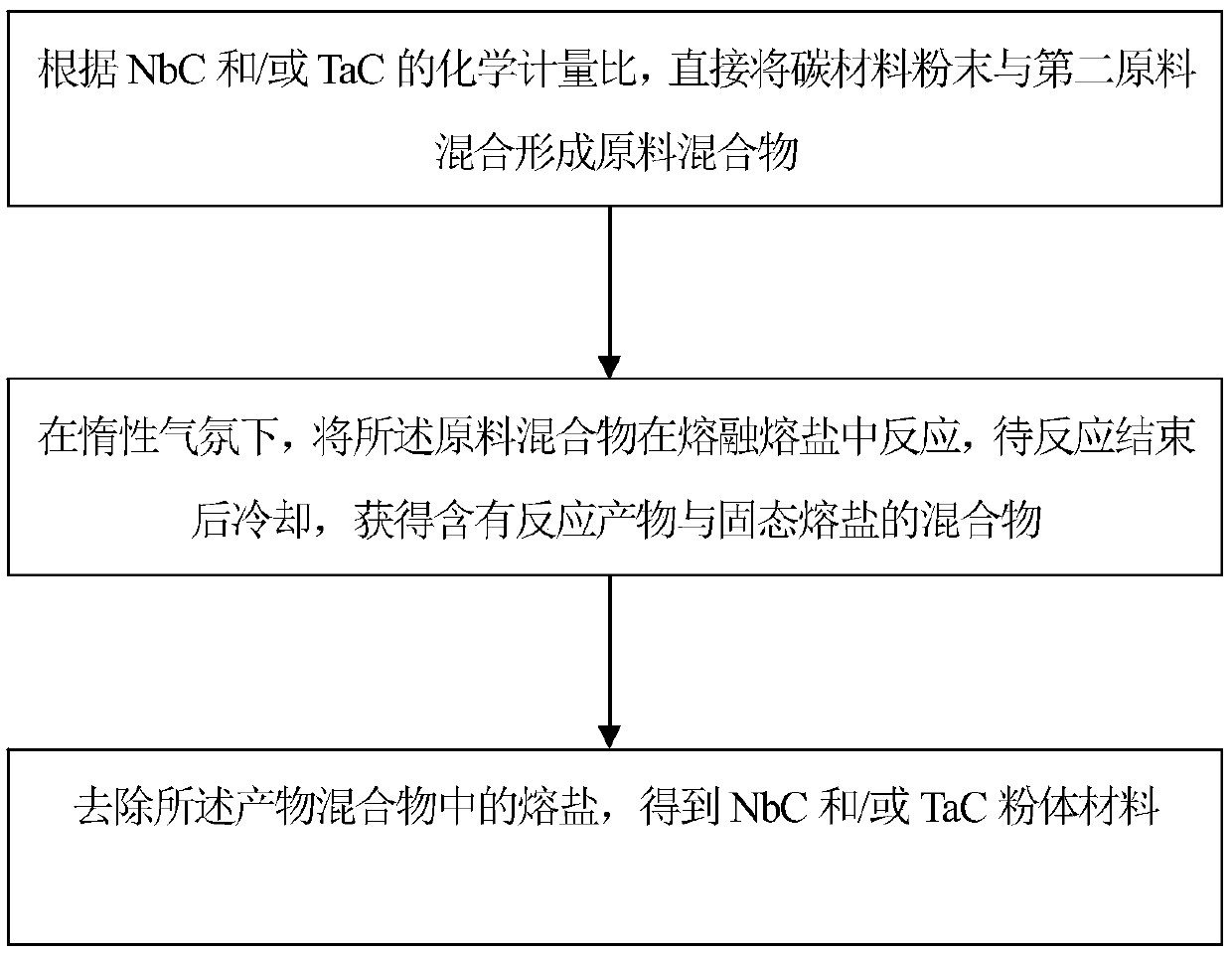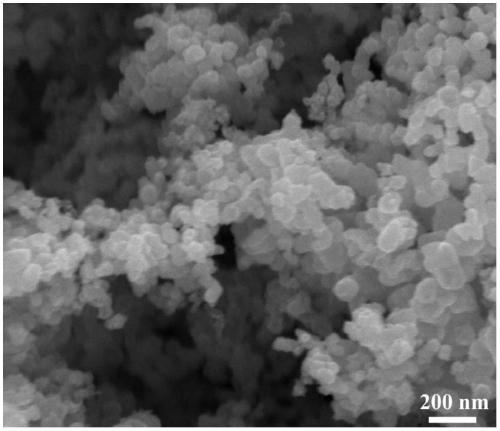Method for in-situ preparation of NbC and/or TaC powder by molten salt disproportionation reaction
A disproportionation reaction, in-situ preparation technology, applied in chemical instruments and methods, nanotechnology for materials and surface science, inorganic chemistry, etc., can solve the complex preparation process and equipment, difficult to control morphology and size, synthesis temperature Advanced problems, to achieve the effects of low raw material cost and process cost, controllable product shape and scale, and simple process flow
- Summary
- Abstract
- Description
- Claims
- Application Information
AI Technical Summary
Problems solved by technology
Method used
Image
Examples
Embodiment 1
[0050] In this embodiment, weigh 20 units of weight (for example, kilograms) of NaCl-KCl eutectic salt, and mix with 2 units of weight of Nb powder (400 mesh), 0.34 units of weight of Nb 2 o 5 Powder (300 mesh), 1.0 unit weight of NaF, 0.36 unit weight of nano C powder (average particle size 50nm) were mixed, and the mixture was placed in a corundum crucible. The above crucible was placed in a stainless steel reactor, sealed and protected by Ar gas. Use a temperature controller to raise the temperature to 750°C at a rate of 5°C / min, keep it at this temperature for 6 hours, and then turn off the power and cool down to room temperature with the furnace. The obtained product was taken out, soaked and rinsed with deionized water to remove residual molten salt, and then dried at 80° C. to obtain the target product NbC.
[0051] The obtained target product is tested, and its XRD pattern and SEM photo are respectively as follows figure 2 and 3 shown. Depend on figure 2 and 3...
Embodiment 2
[0053] In this example, weigh 50 units of NaCl-KCl eutectic salt, and mix it with 2 units of Nb powder (325 mesh), 0.7 units of NbCl 5 powder, 0.32 unit weight carbon nanotubes (average tube diameter 50nm, tube length 5-10μm) were mixed, and the mixture was placed in a corundum crucible. The above crucible was placed in a stainless steel reactor, sealed and protected by Ar gas. Use a temperature controller to raise the temperature to 925°C at a rate of 8°C / min, keep it at this temperature for 5 hours, then turn off the power and cool down to room temperature with the furnace. The resulting product was taken out, rinsed with deionized water to remove residual molten salt, and then dried at 100°C to obtain NbC nanotubes. The TEM results were as follows: Figure 4 As shown, the size of the NbC nanotubes in the obtained product is equivalent to that of the carbon nanotubes in the raw material, and the purity is 95.5 wt%.
Embodiment 3
[0055] In this example, weigh 10 units of NaCl-CaCl 2 Eutectic salt, and with 2 unit weight of Nb powder (325 mesh), 1.8 unit weight of NH 4 Cl and 0.32 unit weight of acetylene black (average particle size 50nm) were mixed, and the mixture was placed in a corundum crucible. The above crucible was placed in a stainless steel reactor, sealed and protected by Ar gas. Use a temperature controller to raise the temperature to 850°C at a rate of 8°C / min, keep it at this temperature for 3 hours, and then turn off the power and cool down to room temperature with the furnace. The obtained product is taken out, soaked and rinsed with deionized water to remove residual molten salt, and then dried at 100°C to obtain NbC nanoparticles. The particle size of the NbC nanoparticles in the obtained product is 50-80nm, and the purity is 99.6wt%.
PUM
| Property | Measurement | Unit |
|---|---|---|
| Granularity | aaaaa | aaaaa |
| Granularity | aaaaa | aaaaa |
| Scale | aaaaa | aaaaa |
Abstract
Description
Claims
Application Information
 Login to View More
Login to View More - R&D Engineer
- R&D Manager
- IP Professional
- Industry Leading Data Capabilities
- Powerful AI technology
- Patent DNA Extraction
Browse by: Latest US Patents, China's latest patents, Technical Efficacy Thesaurus, Application Domain, Technology Topic, Popular Technical Reports.
© 2024 PatSnap. All rights reserved.Legal|Privacy policy|Modern Slavery Act Transparency Statement|Sitemap|About US| Contact US: help@patsnap.com










